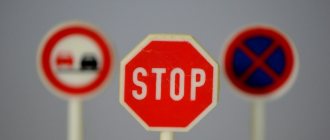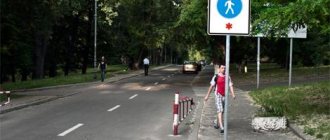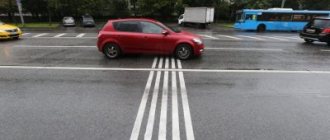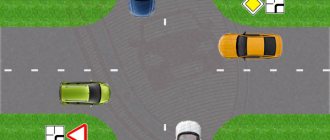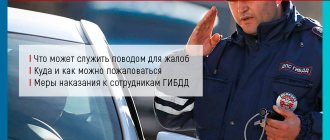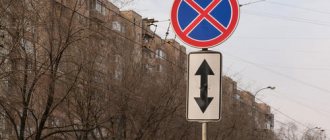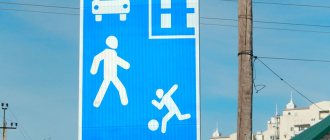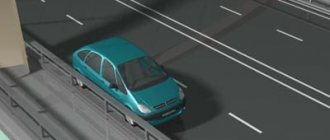What it is
A pedestrian crossing is a section of a highway that is intended for pedestrians to cross the roadway and is marked with a road sign of the same name and/or special markings on the roadway itself. Also, this element can be made in the form of an artificially created structure to provide the opportunity for pedestrians to cross to the opposite side of the road without crossing the roadway.
A specialized road sign exists in two versions: a person moves to the left (5.19.1) and to the right (5.19.2).
The basic requirements and rules for the arrangement of pedestrian crossings according to GOST in Russia are recorded in document 32944-2014.
Autonomous lighting of pedestrian crossings: advantages, description, goals
Modern road surfaces are increasingly being designed taking into account the practicality of operating lighting devices, as well as the minimal use of expensive sources of electricity. Thus, lighting of pedestrian crossings using solar eco-batteries is the most popular option.
Read on topic: Geogrid for road construction
Street lights using solar alternative power sources are most often used in areas with long sunny days, since the efficiency of such a lighting device directly depends on the amount of sunlight flow.
In what cases is it necessary
To organize the crossing of the road by persons on foot, there must be certain indicators of the intensity of traffic of road users:
- for eight consecutive hours on a working day, the intensity of traffic flow is 600 units per hour or more (for roads with a dividing strip - 1000 units per hour) on the main road in both directions;
- or 150 citizens per hour crossing the roadway for the same 8 hours.
If these parameters are not achieved, then there is no reason to create a pedestrian zone on the road.
Reference. The width of a pedestrian crossing located on the ground part of the road must be at least 2.5 m.
Also, the creation of these sections in populated areas is required when, over the past year, at least three accidents have occurred at an intersection related to vehicle collisions with citizens crossing the road, which could have been avoided if there was a zone for pedestrians.
Determination of road visibility and specific visibility of an object at night
General visibility (visibility of the road in the direction of travel) is the maximum distance from the front of the vehicle, at which the elements of the road along the path of movement are clearly visible from the driver’s seat, orientation towards which allows the vehicle to be driven in the lane recommended by the Rules of the Road. As a rule, such road elements can be: road marking line, edge of the roadway, edge of the dividing strip, edge of the curb, edge of the fence, etc.
Specific visibility is the maximum distance from the front of the vehicle at which an object (pedestrian, cyclist, stationary vehicle, etc.) can be clearly identified from the driver’s seat by its characteristic features.
Conditions for the experiment to determine visibility
This experiment is carried out in conditions as close as possible to the conditions of an accident. All factors affecting visibility must be taken into account here, in particular:
• weather conditions (snow, rain, fog, etc.);
• type, condition and color of the surface, presence of road markings;
• longitudinal profile, plan curves, road configuration;
• illumination (artificial and natural lighting should not differ significantly from what was at the time of the accident).
Experimental site and aids
As a rule, an experiment to determine visibility is carried out on the section of the road where the accident occurred. Under the circumstances mentioned above, it is permissible to conduct the experiment in areas similar to the area of the accident site. Other vehicles must be stopped at such a distance from the experiment site that the light from their external devices does not affect visibility at the experiment site.
Vehicles involved in road accidents at night often suffer significant damage. In this case, the vehicle must be replaced with a vehicle of the same type, having the same power of headlight lamps, degree of contamination of headlight lenses and windshield.
If the experiment cannot use an object whose visibility should be established, then when choosing a similar object, you should first of all pay attention to elements that can influence the possibility of its visibility and recognition. For example, if this object is a cyclist, then the color of the guards and the frame of the bicycle must be taken into account, and it is also necessary:
• that the bicycle used in the experiment be equipped with the same reflectors as the bicycle involved in the accident;
• retroreflectors must be installed and secured in the same way as during an accident (in particular, the optical axis of the retroreflector must be at the same angle as during an accident) and have the same color. The surface of the reflector must have similar transparency and corrugation pattern;
• if the bicycle had lighting equipment, then it must also be installed on the experimental bicycle and have similar characteristics;
• that the cyclist (demonstrator) wears the same clothes as the victim. When this is not possible, the demonstrator is dressed in clothing similar in appearance and color. If there were any areas on the victim’s clothing that had a retroreflective effect, then there should be the same areas on the demonstrator’s clothing.
Determining the visibility of the road and specific
Visibility of a stationary object in the absence of headlights
Oncoming vehicle
Preparatory stage
The preparatory stage includes measures for the selection of experiment participants, the vehicle involved in the accident or its replacement, the object whose visibility needs to be established (vehicle, dummy, any obstacle, etc.), agreement on the time of the experiment, the necessary reconstruction of the experiment site , as well as measures to ensure the safety of the experiment.
Progress of the experiment
After the experiment site is fenced off by police posts and the necessary work is carried out to reconstruct the scene of the incident, an object is placed at the site of the collision, the visibility of which must be established. For example, if the object in question is a lying person, then a mannequin (demonstrator) wearing the victim’s clothing or similar in type and color is placed at the site of the collision. The vehicle from which visibility will be determined is placed from the collision site in the direction opposite to the direction of movement before the collision, at a distance from which the object is not visible. From the driver's seat, the observer and witnesses determine the place to which the road is visible, for example, the border of the right edge of the roadway with the shoulder. If the roadway has markings in the form of broken lines, it is enough to count the number of lines visible from the driver’s seat and measure the distance from the front of the vehicle to the end of the last visible line.
If the right border of the roadway is visible at a greater distance than the longitudinal markings, and also if there are no longitudinal markings, the visibility of the road is determined by the distance at which the right border of the roadway and the shoulder are still distinguished.
The visibility distance of a road can also be determined by the visibility of road barriers. The visibility of road signs or other structures, whether or not marked with vertical markings, does not in all cases allow one to judge the direction and width of the roadway, therefore the issue of road visibility, based on the visibility of road signs and structures, is decided in each case separately.
To determine the place to which the border of the right edge of the roadway with the shoulder is visible, one of the experiment participants carrying a retroreflector is sent forward along the road from a standing vehicle. The reflector should be carried along the right border of the roadway at a height of no more than 15-20 cm, periodically turning its active side towards the driver-observer. The driver-observer, focusing on the flashes of the reflector, indicates (by radio or blinking the headlights) where the person carrying the reflector should stop (in the place to which the border of the roadway and the shoulder is visible), after which the distance from the front of the vehicle is measured up to this place. This will be the visibility distance of the road in the direction of travel.
Instead of a reflector, you can use a white sheet of paper, which is carried and periodically rotated in the same way as the reflector.
In winter, the color of the paper sheet should be chosen to contrast with the snow cover.
The need to use a reflector or a sheet of paper, as practice has shown, is determined by the fact that a person moving away from the vehicle becomes invisible to the driver-observer, and he cannot be stopped in a place where the border of the roadway and the side of the road is visible.
When determining visibility, you need to pay attention to the following. When the vehicle stops, the engine runs at idle speed. In cases where the battery is weakly charged, the intensity of the headlight lamps will decrease. Therefore, the engine speed should be maintained within the limits corresponding to its speed for the speed before the collision.
After establishing the road visibility distance, the vehicle from which visibility is determined moves at a speed of 3-4 km/h in the direction of the object whose specific visibility needs to be established. The driver-observer stops the vehicle in a place from which the object can be identified by external signs (silhouette, outline of legs, elements of clothing, etc.). By measuring the distance from the front of the vehicle to the identified object, we obtain the specific visibility distance of this object from the driver’s seat.
Determining the visibility of the road and specific
Visibility of a moving object in the absence of headlights
Oncoming vehicle
Preparatory stage
The preparatory stage includes measures for selecting participants in the experiment, the vehicle involved in the accident or its replacement, the object whose visibility needs to be established (vehicle, cyclist, pedestrian, horse-drawn cart, etc.), agreeing on the time of the experiment, the necessary reconstruction of the site experiment, as well as measures to ensure the safety of the experiment.
Based on information about the speed of a vehicle and a moving object (for example, a pedestrian), the distances covered by them in one second are determined. For a vehicle, its speed in km/h is divided by 3.6.
For example: 40 km/h: 3.6 = 11.1 m/s; 60 km/h: 3.6 = 16.6 m/s, etc.
The path covered in one second by a moving obstacle (pedestrian, cyclist and horse-drawn cart), as a rule, is determined experimentally by simulating the pace of their movement, which is corrected by eyewitnesses of the incident (including the driver of the vehicle that caused the collision), measuring the time it takes them to pass a section of a certain length using stopwatch. Dividing the length of the section, along the boundaries of which the time of its passage was determined, by the time of passage of the section in seconds, we obtain the path traversed by the obstacle in one second. For example, a moving obstacle (pedestrian) covered a 10 m section in 7.4 s. Dividing 10 m by 7.4 s we get 1.35 m/s.
Further from the collision site in the direction opposite to the movement of the vehicle, and along the path of its movement, sections equal to the distance covered by the vehicle in one second are marked (if the speed was 60 km/h, then sections 16.6 m long are marked). A sufficient number of such sites, as practice has shown, is 5 (if necessary, their number can be increased). From the place of the collision in the direction opposite to the direction of movement of the pedestrian who was hit, and along the path of his movement, 5 sections are also marked, for the case under consideration - 1.35 m each.
Examples of marking a site for conducting an experiment to determine the specific visibility of a moving object in the absence of headlights from oncoming vehicles are shown in Fig. 2.2—2.5. These examples show cases of marking areas to determine the specific visibility of a pedestrian moving (along the way, towards, from left to right and from right to left relative to the direction of movement of the vehicle that made the collision).
Progress of the experiment
The vehicle and the object are placed respectively at the beginning of sections No. 5. In this case, the vehicle is installed with its front part on the boundary of the section (usually a collision is made with the front part), and the object is installed on the border of its 5th section at the level of the place of initial contact with it when colliding .
From this position, the visibility of the road and the specific visibility of the cyclist are determined.
The method for determining road visibility does not differ from the above method for determining the visibility of the road and the specific visibility of a stationary object in the absence of an oncoming object.
From the driver's seat, the observer and witnesses determine the place to which the road is visible, for example, the border of the right edge of the roadway with the shoulder.
The maximum distance from the front of the vehicle, at which the elements of the road along the path of movement are clearly visible from the driver’s seat, is the determined road visibility distance.
Next, the vehicle and the object move to the boundaries of sections No. 4. In this case, the visibility of the road is determined if necessary, if it changes due to changes in road conditions, for example, a transition from ascent to descent, a change in the radius of the road, etc. On straight and level sections of the road, the visibility of the road, as a rule, changes slightly.
The distance from the front of the vehicle to the object, at which it became possible to clearly identify the object by its characteristic features, will be the distance of specific visibility of the object.
If the opportunity to detect signs of an object appears between the boundaries of areas, then this area should be divided into parts (for example, into 2 parts, which will correspond to a path in 0.5 s; or into 4 parts, which will correspond to a path in 0.25 s) and the subsequent movement of the vehicle and the object should be carried out not over the entire area, but into its corresponding parts for a more accurate determination of the specific visibility distance.
Legend: a
-
the distance covered by the vehicle in one second;
b -
the distance covered by a pedestrian in one second
Fig. 2.5
Kinds
There are two types of crossings for pedestrians, each of which has its own subtypes. They share:
- according to the method of citizens crossing the roadway, location on the roadway, clearance level of transport and pedestrians;
- by the presence of a safety island;
- according to the degree of elimination of conflict situations.
The basic requirements for pedestrian crossings in accordance with GOST 32944 2014 regulate the arrangement of this section of the road.
The first type is further divided into three categories:
- Unregulated ground - a certain section of the road that is intended for citizens to cross the roadway with the presence of appropriate designations in the form of a sign and/or horizontal road markings.
- The adjustable type is equipped with a traffic light system.
- A multi-level pedestrian zone ensures that citizens can cross the road without moving along the roadway (underground or above ground).
Based on the presence of a safe island, zones are divided into:
- without island;
- with a dedicated island and pedestrian crossing of the road;
- with a dedicated island and a curved intersection for the movement of pedestrians.
According to the level of conflict elimination, walking areas are divided into:
- regulated with a conflicting scheme for controlling the movement of pedestrians (when the traffic light turns green, the movement of right- and left-turn vehicles is allowed at the same time, but drivers must give way to pedestrians);
- regulated with a conflict-free scheme (when the signal is green, pedestrians do not interfere with the flow of traffic). One of the options for such a zone is a section of the road when traffic completely stops and pedestrians cross the roadway. It's called a full pedestrian phase crossing.
Where are they located?
Markings of pedestrian zones on highways should not be located in front of the doors of shops, walk-through organizations, school gates or other children's institutions that are located nearby. In such a situation, a pedestrian crossing fence in accordance with GOST (second group) is installed on their way, and the flow of pedestrians turns along the sidewalk for 20-30 meters (preferably against the traffic flow).
Attention: Crosswalks must not be located in areas of roads and streets where the standard indicator of visibility of oncoming vehicles on curves in plan and convex curves in profile has not been achieved. If these requirements are not met, then the speed of vehicles must be limited.
In those areas where pedestrian traffic is carried out along the dividing strip, it is necessary to install separated crossings by installing pedestrian barriers that direct pedestrians towards traffic traffic.
Designing a pedestrian crossing using autonomous lighting stations
Autonomous power plants for the design of a pedestrian crossing are significantly higher in cost than the costs of design from electricity sources. However, this option is considered the most profitable in certain regions of the country. By properly designing the pedestrian overpass area, you can not only control the quality and intensity of lighting, but also significantly reduce the risk of accidents in this area.
Read on topic: Noise stripes on the road
The most commonly used models for lighting pedestrian crossings in populated areas and rural areas are models SEU-1 (with a power of 40-160 W) and SEU-2 (with a power of 180-300 W).
The principle of designing energy-efficient stations at pedestrian crossing points is to comply with all standards and requirements. According to the current GOST. It is worth noting that some features and aspects in the design of the sanctified territory may be slightly adjusted, depending on budgeting.
Modernization
The existing system for organizing pedestrian sections of roads is imperfect. Today, it has been decided to modernize it by introducing certain amendments to the law.
On the official website of the traffic police they proposed to improve the system with reference to the current rules and regulations. Many pedestrian crossings in Russia are not equipped correctly, so they are currently being extensively inspected by state traffic inspectors. A list of comments is also compiled in order to eliminate them.
Pedestrian safety depends on the intensity of traffic flow. And the number of cars increases significantly every year. Therefore, it is necessary to reconsider the systems of zones for pedestrians in each specific locality and throughout the country.
In addition, the occurrence of emergency situations is influenced by the degree of discipline of all road users in the aggregate. First of all, you should start with them - to form the correct view of the procedure for crossing a roadway or pedestrian zone. Having a perfect system will not help if citizens behave undisciplined on the road.
Interesting: The State Traffic Inspectorate suggested holding educational conversations in school institutions to inform children about correct behavior on the roadway.
A proposal has also been put forward to install warning signs, increase the visibility of zebra crossings and take other measures to increase the visibility of pedestrian sections of roads.
Sanctions for violating the rules for passing pedestrian zones
If the driver violates traffic rules in the field of road traffic itself, then the amount of the penalty is calculated in ruble equivalent in accordance with the current Code of Administrative Offenses of the Russian Federation.
For failure to comply with the conditions for yielding the road to a pedestrian, cyclist or other road users, an administrative fine in the amount of 1,500 rubles is imposed.
It is important to know: For failure to allow pedestrians transporting children to pass, the sanctions will be 3 thousand rubles. A 50% discount applies to early payment of fines.
For parking a car at a crossing and at a distance of less than 5 m in front of it, the driver will be fined 1 thousand rubles.

